7.4 /10 1 Votes7.4
7/10 GameSpot Producer(s) Isa Anne Stamos Artist(s) Matt Omernick Initial release date 16 September 2008 | 6/10 Steam 4.5/5 Microsoft Programmer(s) Cédrick Collomb Composer(s) Jesse Harlin | |||||||||||||||||||||||||||||||||
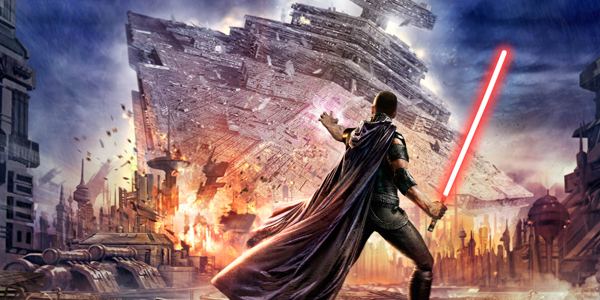 | ||||||||||||||||||||||||||||||||||
Publishers LucasArts, Activision, THQ, THQ Wireless Similar LucasArts games, Action-adventure games | ||||||||||||||||||||||||||||||||||
Star wars the force unleashed hd gameplay walkthrough part 1 let s play
Star Wars: The Force Unleashed is an action-adventure video game and part of The Force Unleashed project. It was initially developed for the PlayStation 2, PlayStation 3, Wii, and Xbox 360 consoles and on the iOS, second-generation N-Gage, Nintendo DS, PlayStation Portable, and Java-equipped mobile phone handhelds.
Contents
- Star wars the force unleashed hd gameplay walkthrough part 1 let s play
- Star wars the force unleashed i game movie
- Gameplay
- Plot
- Cast and characters
- Concept
- Story
- Technology
- ILM collaboration and cast performance
- Music
- Expansion
- Reception
- PlayStation 3 Xbox 360 and PC
- Other platforms
- References
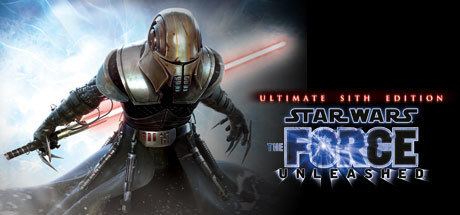
The game was released in North America on September 16, 2008, in Australia and Southeast Asia on September 17, and in Europe on September 19. LucasArts released downloadable content for the PlayStation 3 and Xbox 360 consoles. An Ultimate Sith Edition of the game, containing new and all previously released expanded content, was released in November 2009, which also came out on Mac OS and Microsoft Windows.
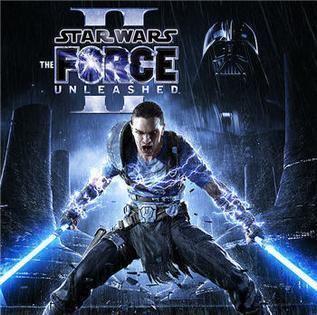
The project bridges the first two Star Wars trilogies, acting as an origin story for both the united Rebel Alliance and the Galactic Civil War depicted in the Original Trilogy. The game introduces a new protagonist, "Starkiller", as Darth Vader's secret apprentice, who is tasked with hunting down Jedi while killing rebels and Imperials alike in order to hide his existence from the Emperor, but soon starts to slowly redeem himself to the light side of the Force.
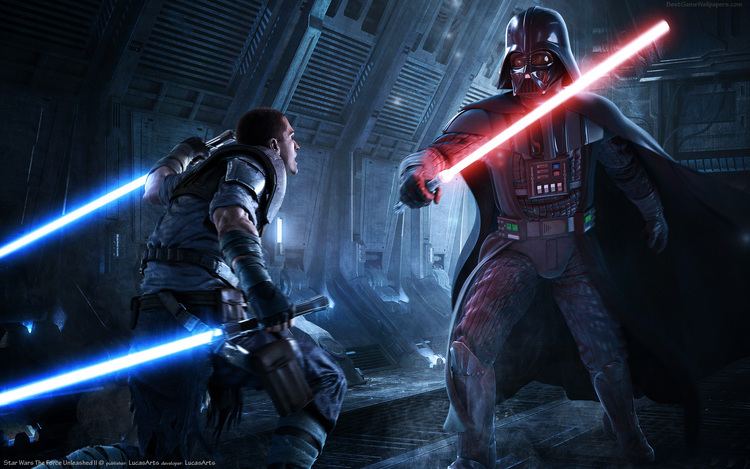
Reviews offered fairly positive response, praising The Force Unleashed for its compelling story, robust physics, impressive art and soundtrack, while some more negative reviews cited frustrating gameplay. Despite this, the game was a bestseller in the United States and Australia, with over one million copies sold its debut month. As of February 2010, the game has sold over seven million copies, and it is the fastest-selling Star Wars video game. A sequel, Star Wars: The Force Unleashed II, was released in October 2010.
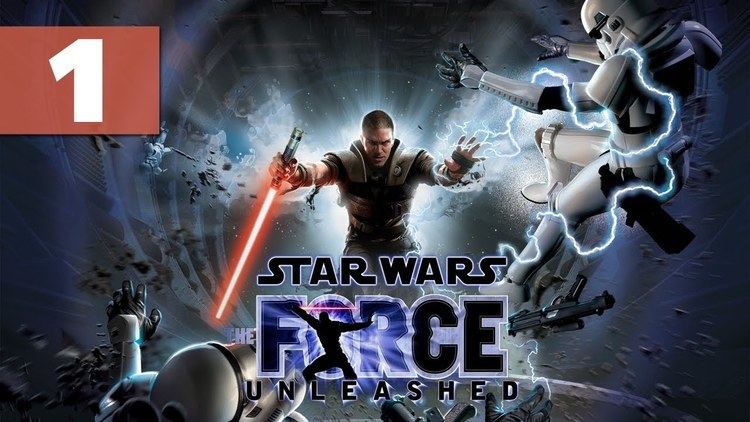
Star wars the force unleashed i game movie
Gameplay
The Force Unleashed is a third-person action game in which the player's character's weapons are the Force and a lightsaber. Developers treated the main character's lightsaber like another Force power, and wanted to ensure "something visceral and cool" happened with each button-push. The game has a combo system for stringing lightsaber attacks and for combining lightsaber attacks with Force powers. Experience points earned by killing enemies and finding artifacts can be used to increase Starkiller's powers and traits. The gameplay is intended to be easy to learn; the development team included "horrible" gamers to help ensure the game's accessibility. Players can casually run and gun through the game, but the game rewards those who take a stealthy, more tactical approach. The game includes enemies that are easy to overcome; game difficulty arises from presenting these enemies in large numbers that can wear down the player's character. Additionally, enemies learn from the player's character's attacks; using the same attack on different characters can sometimes lead to the player's character doing less damage. The enemies, which number over 50, have various strengths and weaknesses; developers faced the difficulty of effectively placing them throughout the game's varied environments.
Plot
Set in between Star Wars: Episode III – Revenge of the Sith and Star Wars: Episode IV - A New Hope, Darth Vader is sent by Emperor Palpatine to destroy a Jedi who survived Palpatine's Jedi purge and is hiding on the Wookiee homeworld, Kashyyyk. The Force Unleashed begins with the player controlling Darth Vader as he searches Kashyyyk for the Jedi. After defeating the Jedi in battle, Vader discovers his child who is strong in the Force and raises him to become his apprentice, unbeknownst to the Emperor. When the apprentice (known in the game as "Starkiller", and whom the player now controls) reaches adulthood, Vader sends him to kill the remaining Jedi as training for his ultimate goal: assassinating the Emperor so Vader and Starkiller can rule the galaxy together.
Starkiller is given command of his own ship, the Rogue Shadow, piloted by Imperial officer Juno Eclipse, and is accompanied by PROXY, a training droid. Vader sends Starkiller to an Imperial shipyard to locate and kill General Rahm Kota. After fighting him, Starkiller blinds Kota and throws him from the shipyard. Starkiller is also sent by Vader to destroy Jedi Kazdan Paratus and Shaak Ti, who are each in hiding on separate planets. Presently the Emperor discovers Starkiller and Vader is forced to dispose of him, but later recovers the unconscious apprentice. Vader instructs him to form a rebellion against the Empire in order for them to distract the Emperor and make their move against him.
Starkiller discovers a very-much alive Kota in Cloud City who has taken to living in squalor. Starkiller informs Kota of his plan to fight the Empire and they leave. During his time amassing allies, Starkiller is forced to rescue Kota's contact Bail Organa and his daughter Princess Leia to help his cause.
Bail, Leia, Mon Mothma and Garm Bel Iblis meet with Starkiller, and Kota on Correlia to meet and declare a rebellion against the Empire. However, upon doing so, Vader arrives with Imperial soldiers and arrests the group. Vader attacks Starkiller and reveals that he was never part of his plan to overthrow the Emperor; from the beginning, he was the Emperor's tool to expose his enemies. Starkiller escapes and uses the Force to ascertain the senators’ and Kota’s location: the Death Star. Following in pursuit, Starkiller fights his way through the battle station’s infrastructure, before confronting Vader and engaging him in combat, gaining the upper hand and defeating his master. Kota attempts to fight the Emperor, but is incapacitated by the Emperor's Force lightning.
At this point, the player chooses to either seek revenge on Vader or save Kota from Emperor Palpatine:
Cast and characters
Other performances came from Susan Eisenberg as Shaak Ti and Catherine Taber as Princess Leia Organa. In addition to voicing Starkiller, Witwer also provided the voice of Emperor Palpatine. R2-D2 also makes an appearance in the game alongside Leia.
Concept
Game planning began in summer 2004. Initially, about six developers started with a "clean slate" to conceptualize a new Star Wars game; the small group of engineers, artists, and designers spent more than a year brainstorming ideas for what might make a good game. Over 100 initial concepts were whittled down to 20 to 25 that included making the game the third entry in the Knights of the Old Republic series or having the protagonist be a Wookiee "superhero", Darth Maul, a bounty hunter, a smuggler, a mercenary, or the last member of the Skywalker family. The decision to focus on the largely unexplored period between Revenge of the Sith and A New Hope helped energize the design team. Consumer feedback helped the developers narrow in on seven concepts, and elements from those seven went into The Force Unleashed's overall concept.
Production was greatly aided by concept art, which was intended to visually bridge the two Star Wars trilogies, convey the impression of a "lived-in" universe, show how the galaxy changes under Imperial rule, and to seem familiar yet new. An off-hand comment about the Force in the game being powerful enough "to pull a Star Destroyer out of the sky" inspired an image by senior concept artist Amy Beth Christenson that became an important part of the developers' idea pitches and evolved into a major moment in the game. These illustrations also inspired the creation of dozens of simple, three-dimensional animations. Eventually, a one-minute previsualization video highlighting the idea of "kicking someone's ass with the Force" helped convince the designers that The Force Unleashed would be "a great game"; George Lucas, upon seeing the one-minute video, told the designers to "go make that game". Once the concept was solidified, the development team grew from ten to twenty people. The idea of "reimagining" the Force as "amped up" in The Force Unleashed aligned with LucasArts' overall goal of harnessing the power of the latest video game consoles to "dramatically" change gaming, specifically through the use of simulation-based gameplay.
Story
In April 2005, after several months of planning, the LucasArts team received Lucas' encouragement to create a game centered on Darth Vader's secret apprentice in the largely unexplored period between Revenge of the Sith and A New Hope, drawing the two trilogies together. LucasArts spent six months developing the story. Lucas spent hours discussing with the developers the relationship between Darth Vader and Emperor Palpatine and provided feedback on what Vader would want out of and how he would motivate an apprentice. Lucas Licensing reviewed many game details to ensure they fit into canon. Focus group feedback indicated that, while hunting down Jedi at Vader's order would be fun, the character should be redeemed, in keeping with a major Star Wars motif. Although the game introduces new characters, developers felt the presence of characters already part of Star Wars would help anchor the game within the official continuity. Before the game's release, Lucasfilm claimed it would "unveil new revelations about the Star Wars galaxy" with a "redemption" motif. The story progresses through a combination of scripted events, in-game cinematics, cutscenes, and dialogue.
Technology
During pre-production, about 30 people were on the project team. LucasArts spent several years developing the tools and technology to create The Force Unleashed. Prototyping, level construction, marketing, and public relations took about a year. Until late 2006, the production team was ascertaining "how many polygons, lights, [and] characters" next-generation platforms supported; a year of full production began in early 2007. A series of quickly-produced "play blast" videos helped the developers focus on mechanics, the user interface, and finishing moves. Development of the Xbox 360 version came first; PlayStation 3 development started when the production team had enough development kits. Making the game run on both the PlayStation 3 and Xbox 360 was "a monumental task".
The game is based on LucasArts' proprietary "Ronin" game engine but also integrates third-party technology: Havok for rigid body physics, Pixelux Entertainment's "Digital Molecular Matter" (DMM) for dynamically destructible objects, and NaturalMotion's Euphoria for realistic non-player character artificial intelligence. LucasArts' programmers had to overcome technical hurdles to get Havok-, DMM- and Euphoria-coded components to interact. Developers also had to strike a balance between realistic and entertaining physics. LucasArts initially opted not to release a personal computer version of The Force Unleashed, stating that doing the game well would be too processor-intensive for typical PCs and that scaling down the game's procedural physics for the PC platform would "fundamentally" change The Force Unleashed's gameplay. However, LucasArts later announced Windows and Mac versions of the game, developed in conjunction with Aspyr Media, for release in Fall 2009.
Lacking Havok, Euphoria, and DMM, Krome's Wii version relies on the company's in-house physics engine. Some character animations may be ragdoll while others are preset; in developing the game, Krome tried to blur the distinction between the two. The lighting system in the Wii version is more advanced than that in the PS2 version, which Krome also built; the PS2 includes more graphic details than their PSP version.
ILM collaboration and cast performance
The Force Unleashed is intended to make players think they are "actually, finally, in a Star Wars movie". It is the first game on which LucasArts and Industrial Light & Magic (ILM) collaborated since they both relocated to the Letterman Digital Arts Center in San Francisco, California. This collaboration allowed the companies to co-develop tools to make film-quality effects. LucasArts worked with ILM's Zeno tool framework and helped ILM build its Zed game editor. Lucas said having the two companies working together in the same building was "a great collaboration".
It took Senior Manager of Voice and Audio Darragh O'Farrell four months to cast The Force Unleashed. ILM's face- and motion-capture "CloneCam" technology recorded actors' voice and physical performances. This led to a change in LucasArts' casting process: for the first time, actors needed to match characters' age and gender. Actors performed their lines together, rather than in isolation, to better get the sense of their characters interacting with each other. Consequently, the script's dialogue was reduced while reliance on characters' expressions — captured through the CloneCam — increased. CloneCam technology had previously been used in producing the Pirates of the Caribbean movies.
Music
LucasArts music supervisor Jesse Harlin said the music matches the game's motif of redemption and goal of bridging the gap between Revenge of the Sith and A New Hope:
We had to make sure that the game's score started off rooted within the Prequel Trilogy feel of ethnic percussion and sweeping themes that spoke to the nobility and grandeur of the old Jedi Order. As the game progresses, however, the Empire gains more control, the Jedi are hunted, and the ordered control of the Prequels gives way to the more romantic temperament of the Original Trilogy.
The game's soundtrack includes material composed by John Williams for the films in addition to material created specifically for The Force Unleashed. Jesse Harlin composed the game's main theme, while Mark Griskey composed the score. Griskey made use of several motifs from the film scores as well as Harlin's main theme. The 90-minute soundtrack was recorded by the Skywalker Symphony Orchestra and mixed at Skywalker Sound in Lucas Valley in September and October 2007. During gameplay, a proprietary engine combines "musical elements according to the pace, plot, and environment of the game at any given moment", resulting in a unique musical experience. A promotional soundtrack album was made available online through Tracksounds.com in 2008.
Expansion
Two weeks after the game's release, LucasArts announced development on two downloadable expansion packs for the PlayStation 3 and Xbox 360 versions of the game. The first expansion added "skins" that allow the player's character to appear as Star Wars figures other than Starkiller, such as Obi-Wan Kenobi, Anakin Skywalker, Qui-Gon Jinn, Jango Fett, C-3PO, Luke Skywalker, Darth Maul, Darth Sion, Mace Windu, Plo Koon, Kit Fisto and Ki-Adi-Mundi. The skins chosen to be part of the expansion were based in part on fans' feedback. The second expansion pack added a new mission that expands on Starkiller's background. Although a moment in the game's main story was considered as a "jumping off point" for the expansion, LucasArts decided instead to make the new mission instantly accessible to players. The mission's location — the Jedi Temple on Coruscant — appears in the Wii, PlayStation 2 and PlayStation Portable versions of The Force Unleashed, but was cut during planning from the PS3 and Xbox 360 platforms.
The Tatooine Downloadable Content, released August 27, 2009, is the first of two expansions that occur in an "Infinities" storyline, an alternate history in which Starkiller kills Vader and becomes Palpatine's assassin. The second Infinities expansion, which takes place on Hoth, was originally only available as part of the Ultimate Sith Edition, which also includes all previous downloadable content. However, the Hoth expansion was later made available for download on the PlayStation Network and Xbox Live.
Reception
1.738 million unit sales of The Force Unleashed across all platforms made it the third best-selling game globally in the third quarter of 2008; as of July 2009, it had sold six million copies. The Force Unleashed was both the fastest-selling Star Wars game and LucasArts' fastest-selling game. The Force Unleashed won a Writers Guild of America award for Best Video Game Writing.
PlayStation 3, Xbox 360 and PC
The Force Unleashed received mixed to fairly positive reviews. Electronic Gaming Monthly said the game is "ambitious--yet dissatisfying"; however, GameSpot said the game "gets more right than it does wrong". GameSpot said the PC port of the game retained all of the game's strengths and weaknesses, but that the port failed to take advantage of the PC platform.
GameSpot called the game's story "more intimate and more powerful" than the Star Wars franchise's prequel trilogy; X-Play identified the game's story as one of the game's "few bright spots" and said the game's visuals successfully convey Star Wars' "classic used universe" feel. GamePro and GameSpot praised the game's art and physics, and GamePro also commended Starkiller's "cool powers". IGN praised the game's voice acting, particularly Witwer's performance as Starkiller. The Washington Times identified Mark Griskey's soundtrack as "another star" of the game, and Tracksounds called it "the most entertaining Star Wars score since Return of the Jedi". Time called The Force Unleashed the seventh best video game of 2008. The game received GameSpot's 2008 award for Best Use of a Creative License and was nominated for Best Voice Acting. Gaming Target selected the game as one of their "40 Games We'll Still Be Playing From 2008".
Conversely, Entertainment Weekly called The Force Unleashed the second worst game of 2008 and GameTrailers called it the most disappointing game that year; it was also a nominee for GameSpot's Most Disappointing Game recognition. Official Xbox Magazine cited the game's linear gameplay and lack of multiplayer as reasons the game falls short of being "an all-engrossing Star Wars experience". gamesTM suggested that allowing players to take a hack-and-slash approach means many "will never view the title's full potential". IGN and X-Play criticized some boss battles and enemies' behavior; GamePro also faulted "disappointing" boss battles and the game's "uneven" combat. Rather than feeling more powerful as the game progresses, GamePro felt that increases in Starkiller's powers were dampened by increasingly difficult enemy abilities and positions; X-Play commented that despite a good level-up system, Starkiller and his enemies are "pretty much on even ground most of the time". Wired.com, X-Play, and GameSpot criticized the game's third-person camera and the sequence that requires the player to make Starkiller pull a Star Destroyer out of the sky. Wired.com speculated that LucasArts could have recognized the frustration of the Star Destroyer sequence and removed it, but left it in because they hyped the sequence before the game's release. Wired.com and GameSpot further criticized the load times and abrupt gameplay-cinematic transitions. GameSpot also faulted "loose" targeting and some visual and audio glitches. IGN, which also identified problems with targeting, speculated that DMM's processor intensiveness limited its use throughout the game, detracting from players' ability to feel immersed. GameTrailers and IGN were disappointed with the lack of variety within and between levels. X-Play, pointing to "Default Text" as the bonus objective description in the Xbox 360 version's final mission and other glitches, said it seems the developers one day "just stopped working on the game". GameSpot cited the port's lack of visual options and poor framerate as evidence the PC edition had been rushed.
IGN described the Jedi Academy expansion as "pretty decent". GameSpot said LucasArts seems to have acknowledged some of the game's criticisms in developing the Tatooine expansion, but IGN called the level's boss fights "a joke" in light of the player's high Force powers. IGN found the level design in The Ultimate Sith Edition's Hoth scenario uninteresting, and called the boss fight against Luke Skywalker tough but "not nearly as fun" as it could have been.
The demo was the fourth most-played Xbox Live game during the week of August 25, trailing Grand Theft Auto IV, Halo 3, and Call of Duty 4: Modern Warfare; it was the ninth most-played Xbox Live title throughout all of 2008. The week it was released, The Force Unleashed was the sixth most-played game on Xbox Live, and it rose to fifth the following week. In its first week on sale in Australia, the PS3 and Xbox 360 versions of The Force Unleashed were the top and second-best sellers, respectively. In the United States, the PlayStation 3 and Xbox 360 version sold 325,000 and 610,000 copies, respectively, in September 2008; that month, the Xbox 360 version was the best-selling game and the PlayStation 3 version was the fifth best-selling game for their respective consoles.
Other platforms
Nintendo Power praised the story and the number of lightsaber combos but criticized the game's easiness and hack-and-slash gameplay. It also praised the Wii version for its story and Force powers, but criticized the game's lightsaber controls and linear gameplay. GameSpot noticed visual glitches and problematic audio compression that detracted from the Wii version's "mature and exciting" story, adding that the reduced number of Force-manipulable objects helps mitigate the targeting problems experienced on other platforms. Referring to the Wii remote and nunchuck controls, GameSpot also speculated that The Force Unleashed is "possibly the most waggle-heavy" Wii game. Zero Punctuation criticized the Wii version's graphics and compared lightsaber combat to "trying to follow an aerobics routine with both your arms tied to different windmills". The ability to upgrade Starkiller's abilities in the PS2 version, according to IGN, is not as "robust" as it should be, and the game's targeting system is sometimes frustrating. IGN said the PS2's real-time cutscene rendering made Starkiller seem emotionless, and that pre-rendered cutscenes would have been better. GameSpot found the DS version's plot interesting but the storytelling itself "lackluster". While the DS version is easy, with Starkiller killing enemies "like a hot knife through butter", GameSpot said the player's sense of power is not matched by a sense of freedom. GameSpot called the PSP version's camera "unwieldy", but added that smaller and less cluttered environments make the targeting system less frustrating than on other platforms. The Wii version was a nominee for multiple Wii-specific awards from IGN in its 2008 video game awards, including Best Story and Best Voice Acting.
In the week of its release, the Wii version was the sixth bestselling game in Australia and was second to Wii Fit among games for that platform. The PS2 version was the eighth bestseller in Australia, and both the PS2 and PSP versions were the top sellers on their respective platforms. The DS version was eighth most sold among DS games in Australia. In the United States, the Wii version sold 223,000 copies in September 2008, making it the ninth best-selling game that month. In the United States, the PlayStation 2 version was the 14th best-selling game in September 2008, selling over 100,000 copies.
